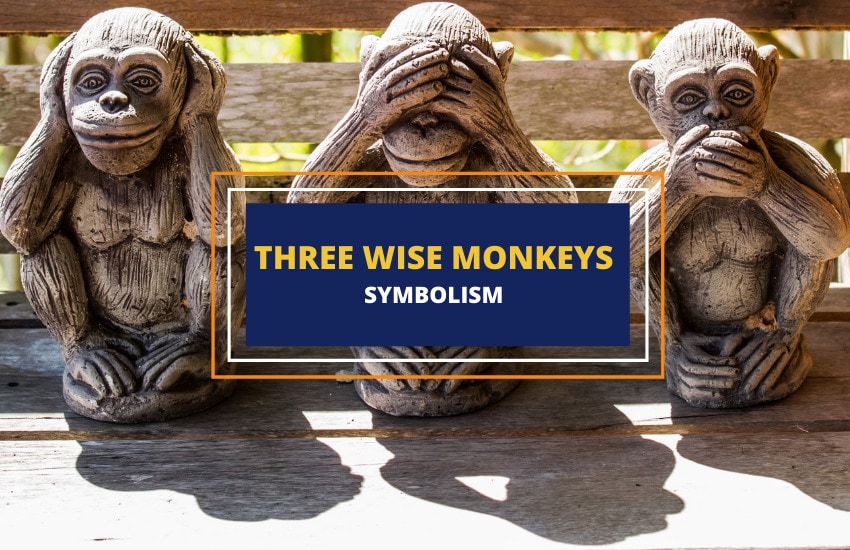
Table of Contents
You’ve probably seen them – the three wise monkeys representing the proverb see no evil, hear no evil, speak no evil. But while the symbolism appears clear enough, what do the three monkeys have to do with evil?
While it’s a relatively modern adage in the West, in the East, where it originated, this proverb and its physical representation date back to antiquity. Here’s a closer look at why the three wise monkeys became associated with the proverb and what it means.
What Do the Three Wise Monkeys Symbolize?
A cultural symbol originating in Japan, the three wise monkeys—one covering his eyes, one his ears, and one his mouth—are known by their names Mizaru, Kikazaru, and Iwazaru. They symbolize the proverbial saying, “See no evil. Hear no evil. Speak no evil”. Surprisingly, their Japanese names are also a play on words.
In Japanese language, the proverb is translated as “mizaru, kikazaru, iwazaru,” meaning “see not, hear not, speak not”. The suffix -zu or –zaru is commonly used to negate a verb or express its opposite meaning. However, the suffix -zaru can also be the modified word for saru that means monkey in Japanese, so the proverb is illustrated by monkey images.
The three wise monkeys represent the moral message of not looking at, listening to, or saying anything evil, as well as to be morally upright in the face of any evil. However, the proverb is sometimes used sarcastically to those who turn a blind eye to something morally or legally wrong. As if by pretending not to see the wrongdoing, they will not be held accountable for it.
Eastern vs. Western View of the Three Wise Monkeys
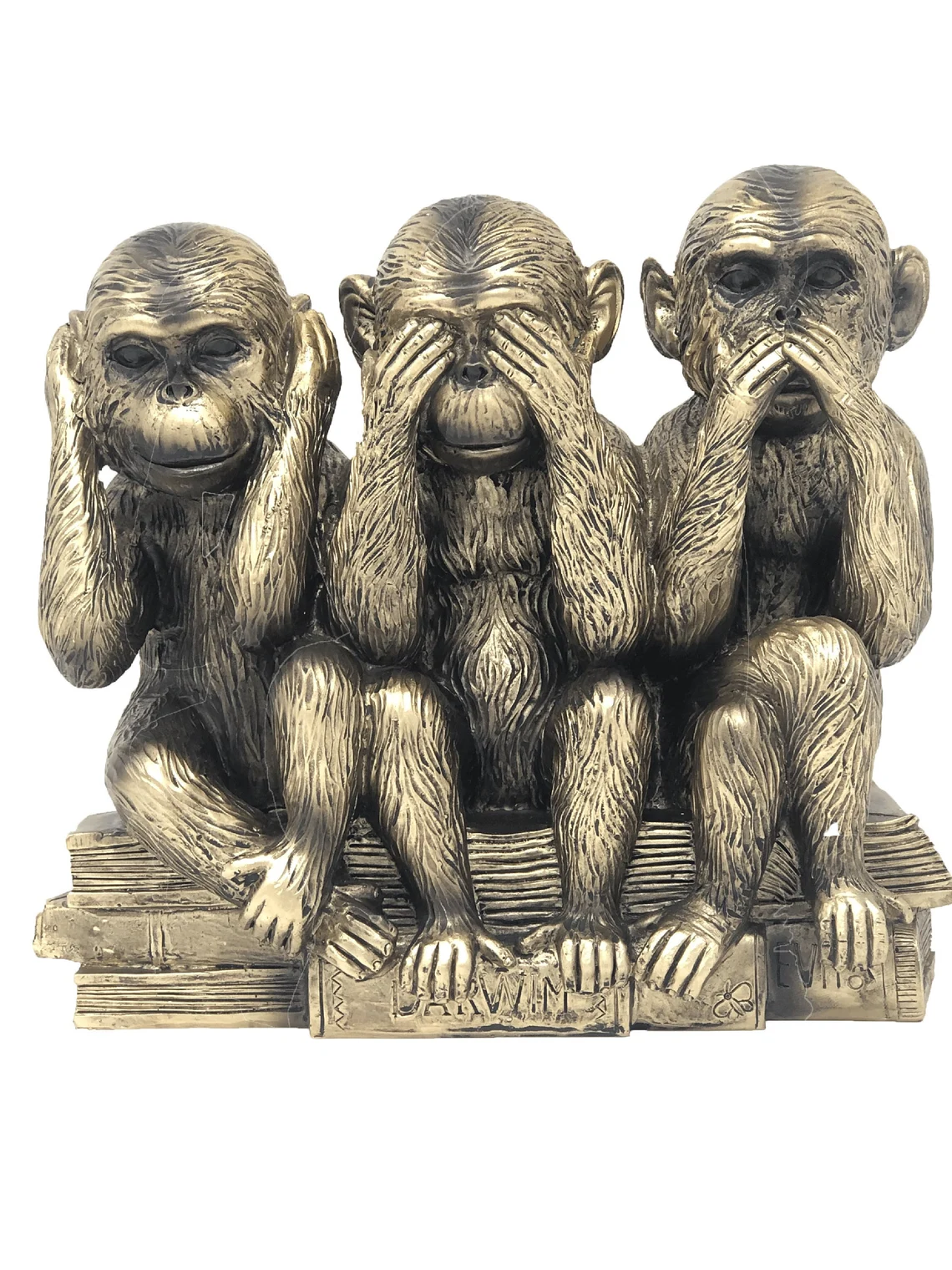
Interestingly, the Eastern and Western perspectives of the symbolism of the three monkeys is completely opposite.
In the East, the image is a reminder to follow a morally upright path by avoiding evil in every form. The three monkeys is a positive symbol that reminds one to be pure and virtuous by not engaging in negative and destructive behaviors. Even Mahatma Gandhi, who was known for having very few possessions, owned a little figurine of the three wise monkeys. He valued the lesson that the symbol represents – that is, avoiding evil in every way if one is to remain pure and virtuous.
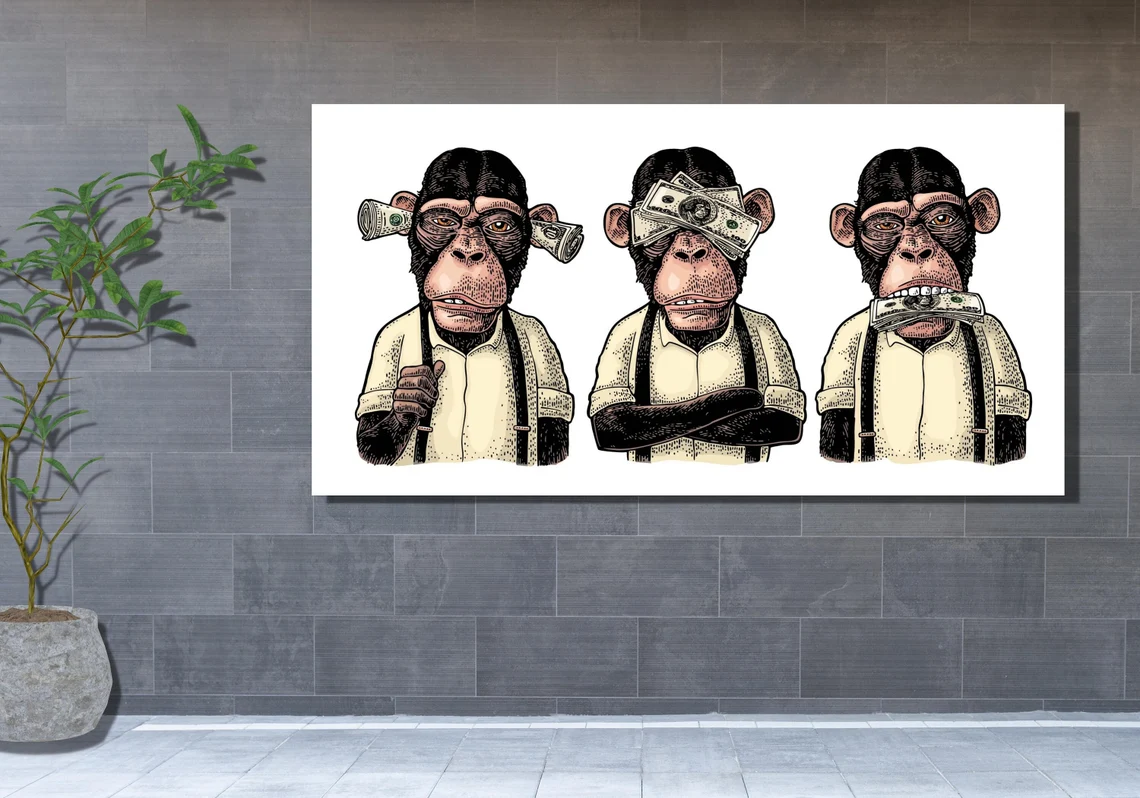
However, in the West, this symbol is used in a completely different way. Here, the image of the three wise monkeys represents turning a blind eye to something morally or legally wrong. For example, you may notice something evil going on, but you decide to completely ignore this so as to avoid accountability and responsibility.
This is not a righteous way to live and as a wise man once said, “The only thing necessary for the triumph of evil is for good men to do nothing”. So in the western context, the three wise monkeys represent the actions we take that allow evil to exist.
This symbolism of the three wise monkeys also aligns with other ancient proverbs, like this Turkish proverb: “To live in peace one must be blind, deaf and dumb” or this Latin phrase, “Audi, vide, tace, si vis vivere in pace,” which translates as “Hear, see, but be silent if you wish to live in peace”.
This is the perfect example of how one symbol can mean completely different things depending on the context. The three wise monkeys can be either positive or negative based on whether you’re looking at it from an Eastern or Western perspective.
From India to Japan, Europe to America
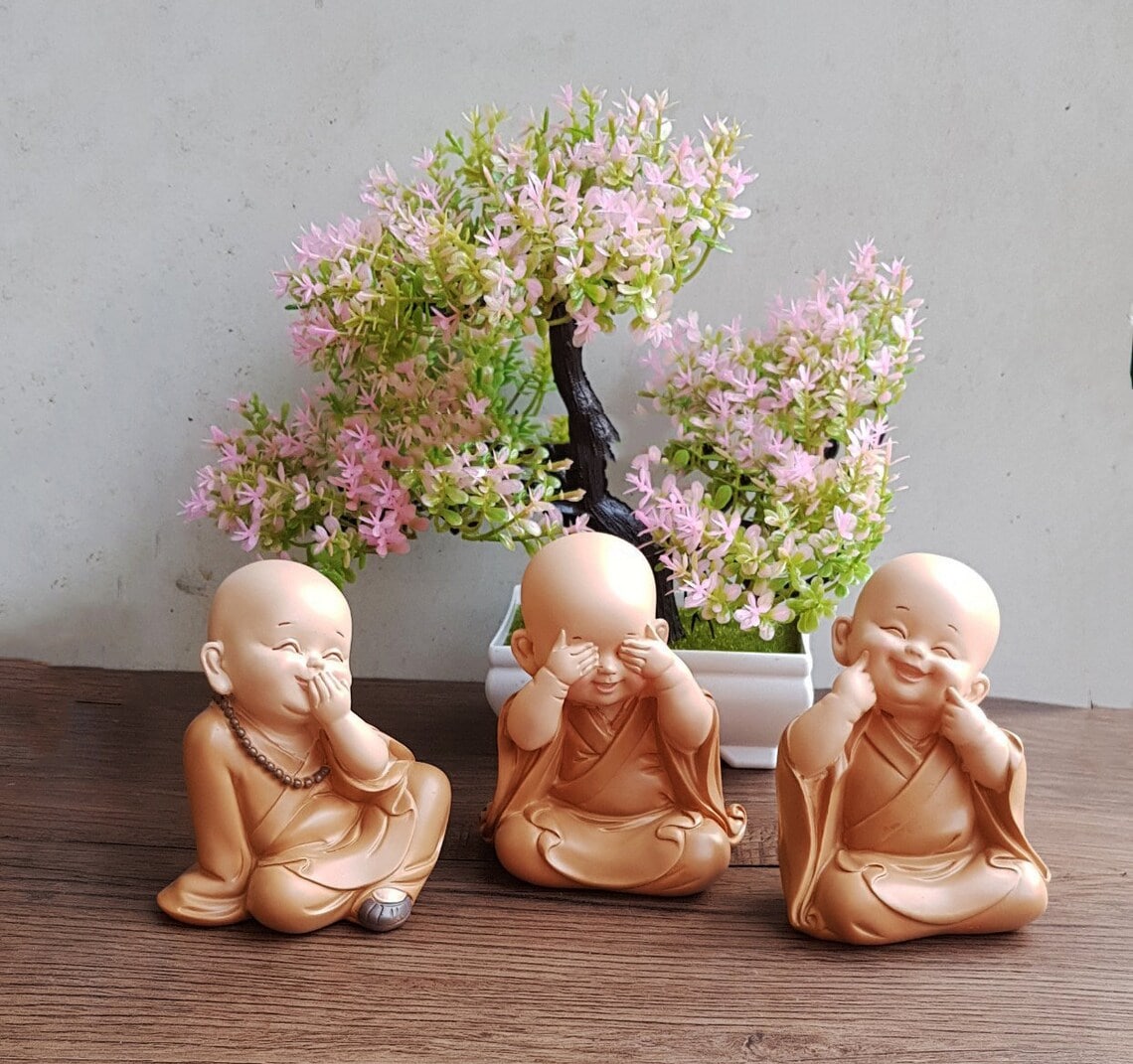
The proverbial saying behind the three wise monkeys predates its physical representation. It originated in ancient China, and then found its animal representation in Japan, and eventually became popular in the West.
During the Warring States period of China, around 475 to 221 BCE, the Analects of Confucius included the proverb:
“Look not at what is contrary to propriety; listen not to what is contrary to propriety; speak not what is contrary to propriety; make no movement which is contrary to propriety.”
However, the motif of the three monkeys was likely brought to China from India through the Silk Road (an ancient trade route connecting the East to the West) and eventually to Japan by the 8th century. By the time of Tokugawa period, also known as the Edo period, which lasted from 1603 to 1867, the three monkeys were portrayed in Buddhist sculptures in Japan.
At Toshogu Shrine in Nikko, Japan, an eight-panel sculpture represents the Code of Conduct developed by Confucius. One of the panels is the Three Wise Monkeys, symbolizing the principle of not seeing, not hearing, and not saying anything evil.
Around the time of the Meiji period, from 1867 to 1912, the sculpture became known to the West, which inspired the saying “See no evil. Hear no evil. Speak no evil”.
In the 1900s, small statues of the three wise monkeys became popular in Britain as lucky charms, especially by soldiers in the First World War. Some experts in folklore associate the symbolism of the three wise monkeys with the proverbs of different cultures. It was also compared to the Yorkshireman motto, “Hear all, see all, say now”, which was known since the late Middle Ages.
Three Wise Monkeys in Modern Culture

In our modern times, the three wise monkeys still embody the proverb they originally represented—but there are various meanings ascribed to them.
In Text Messaging and Social Media
The three wise monkeys are sometimes used as emojis, but they’re often used in lighthearted ways, sometimes not even related to their original meaning. In fact, their usage is common for expressing feelings of joy, surprise, embarrassment, and so on.
The see-no-evil monkey emoji is commonly used to imply, “I can’t believe what I’m seeing”. On the other hand, the hear-no-evil monkey emoji suggests that people hear things they don’t want to hear. Also, the say-no-evil monkey can be used to express one’s reaction for saying the wrong thing in the wrong situation.
In Pop Culture
The images of the three wise monkeys are sometimes printed on t-shirts, woven into sweaters, as well as portrayed on wood, plastic, and ceramic as figurines. They also appear on press advertisements and postcards to carry a more significant message.
In a 2015 horror short film Three Wise Monkeys, the character of the story receives a sculpture of the three monkeys as a sign. Three monkeys are depicted in the trial scene in the 1968 film Planet of the Apes.
In England, they were featured as a fable for children in Hiccup Theater, where monkey-suited actors played the part. The fable narrated the story of a kidnapping of a baby monkey, and the efforts of the three monkeys to rescue him.
FAQs About Three Wise Monkeys
They represent the concept of see no evil, hear no evil, speak no evil.
In the Japanese proverb, the monkeys are Mizaru, Kikazaru, and Iwazaru.
The message is that we should protect ourselves by not letting evil enter our sight, not allowing evil words to enter our hearing, and finally to not speak and engage in evil words and thoughts. In the West, however, the proverb see no evil, hear no evil, speak no evil means to ignore or turn a blind eye to something that’s wrong.
In Brief
Throughout history, animals have been used as a symbol for proverbs—and monkeys are proverbially taken as a type of clever creature. The three wise monkeys are a reminder of the Buddhist teaching that if we don’t see, hear, or speak evil, we shall be spared from evil. Their moral message remains significant in our modern times, and their depiction is one of the most popular motifs around the world.
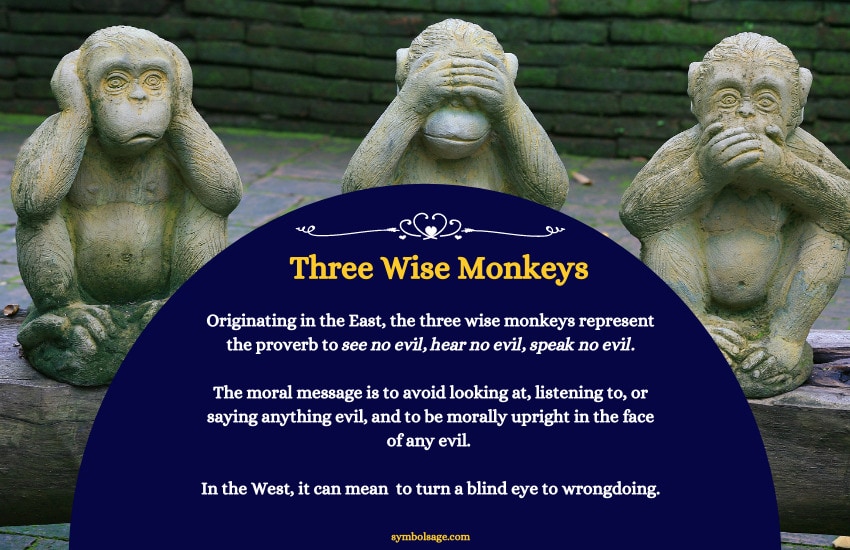
Related Articles:
Hanuman – The Monkey God of Hinduism
What Was the Griffin? History, Origins and Symbolism
Lucky Rabbit’s Foot – History and Symbolism
Symbolism and Meaning of the Hummingbird








